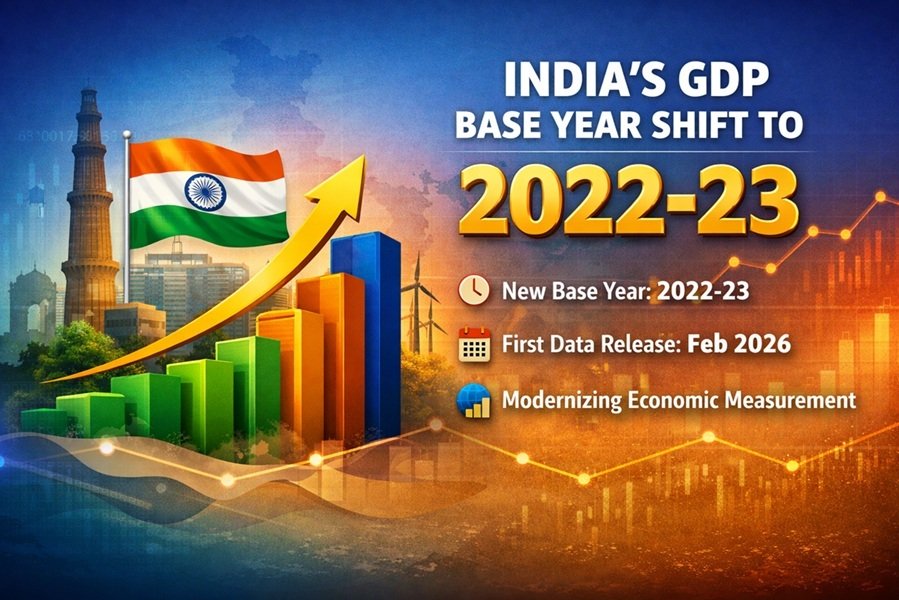
Breaking the Southern Narrative and Gaining Ground in Bihar or A Strategic Distraction from Indo-Pak Tensions?
Introduction
In a politically charged atmosphere leading up to the 2025 Bihar elections and the long-anticipated delimitation exercise, the Bharatiya Janata Party (BJP) has taken a calculated step by approving a caste census. This marks the first such data collection effort since 1931, signaling not only a policy shift but also a broader strategy to counter the growing influence of the INDIA alliance, which has been heavily campaigning on the theme of social justice and caste equity.
This article explores how the BJP aims to break the anti-delimitation narrative in southern states, leverage caste data for electoral advantage in states like Uttar Pradesh and Bihar, and reshape India’s political future and it will be a Strategic Distraction from Indo-Pak Tensions?
Read This: Caste Census in India: A Historical Shift in 2025 and Its Socio-Political Implications
Background: Caste Census and Political Landscape
India has not conducted a full caste census since 1931, apart from the limited Socio-Economic and Caste Census (SECC) in 2011, which was never officially published. The demand for updated caste data has intensified, particularly from opposition parties like the Congress, RJD, DMK, and Samajwadi Party, all of whom form part of the INDIA alliance.
The idea is straightforward: without data, the government cannot make evidence-based decisions about reservations, development spending, or representation. The INDIA bloc, especially in Bihar, has used this as a cornerstone of their campaign—framing the BJP as reluctant to expose caste inequalities.
BJP’s Political Calculation: Why Now?
The BJP’s sudden approval of the caste census on April 30, 2025, was not merely about data collection—it was a deeply strategic political maneuver. Several key goals are evident:
1. Neutralizing the INDIA Alliance’s Strongest Card
The INDIA bloc has consistently attacked the BJP for ignoring caste realities. By initiating the caste census, the BJP dilutes this criticism and even potentially co-opts the narrative of social justice. This helps the BJP in states like Bihar, where Lalu Prasad Yadav and Tejashwi Yadav have built strong caste-based support.
2. Redrawing Electoral Boundaries with Caste Data
With delimitation expected post-2026, caste census data could serve as a new criterion for redrawing constituencies—not just based on geography or total population, but also on caste demographics. This would benefit populous states like Uttar Pradesh and Bihar, where the OBC (Other Backward Classes) population is high and often supportive of the BJP.
3. Countering the South’s Anti-Delimitation Narrative
Southern states like Tamil Nadu, Kerala, and Andhra Pradesh have been wary of the delimitation exercise, fearing that it would reduce their Lok Sabha seat share due to slower population growth compared to northern states.
By aligning caste representation with electoral reform, the BJP aims to soften resistance from the south. The caste census allows it to argue for “representational justice” across India, portraying seat redistribution as a correction of historical imbalances rather than a punishment.
Delimitation and the North-South Divide
What Is Delimitation?
Delimitation is the redrawing of boundaries for parliamentary and assembly constituencies, based on updated population data. The last delimitation was carried out in 2002 using 1971 data, and a freeze on further exercises was placed until 2026.
The Controversy
Northern states like Uttar Pradesh, Bihar, Madhya Pradesh, and Rajasthan are expected to gain more seats due to their higher population growth. Southern states that have implemented better population control may lose influence in Parliament despite having better human development indices.
BJP’s Advantage
By integrating caste data into the delimitation argument, the BJP reframes the debate:
- From: South vs. North (population vs. efficiency)
- To: Social justice and representation for the underrepresented castes
This rhetorical shift is key to defusing backlash from the southern states and expanding the party’s base among OBCs and SCs nationwide.
Bihar Elections 2025: A Testing Ground
Bihar will be the first major test of the BJP’s caste census strategy. The state is a caste-politics laboratory, with deeply rooted affiliations across Yadavs, Kurmis, Koeris, EBCs, Dalits, and upper castes.
BJP’s Focus Areas in Bihar:
- Countering RJD’s Yadav-centric narrative by reaching out to non-Yadav OBCs using newly available caste data.
- Highlighting “Sabka Saath, Sabka Vikas” in the context of backward caste development.
- Positioning the census as a development tool, not just a political instrument.
- Expanding reach among EBCs and Mahadalits, traditionally seen as outside the BJP’s core base.
Impact Beyond Bihar: Boost for Hindi Heartland
With the caste census, the BJP is also setting the stage for a major seat redistribution in the Hindi belt. Uttar Pradesh, Bihar, Rajasthan, Madhya Pradesh, and Jharkhand could all benefit from seat increases in the Lok Sabha post-delimitation. These states collectively have a high proportion of OBCs and SCs, and BJP already has a solid electoral network in place.
This potential expansion of parliamentary representation, when combined with better caste outreach, could ensure long-term dominance for the party.
INDIA Alliance: Losing Its Edge?
The INDIA alliance had pinned much of its campaign on:
- Social justice
- Caste equity
- Accusing BJP of upper-caste bias
But now, the BJP’s caste census decision blurs those lines. If implemented fairly and transparently, the BJP can reposition itself as a champion of backward castes, eroding the opposition’s moral and electoral advantage.
A Strategic Distraction from Indo-Pak Tensions?
Amid rising tensions along the Indo-Pak border and growing concerns over national security, political observers suggest that the caste census announcement also serves as a diversionary tactic. By introducing a politically sensitive yet socially engaging issue like caste enumeration, the government may be aiming to shift public attention away from external threats. This strategy not only helps reduce public anxiety but also ensures that citizens remain engaged in domestic political debates rather than geopolitical unrest. It allows the government to prepare for any military or diplomatic escalation without creating panic, while the public discourse stays focused on internal matters like representation, justice, and development.
Conclusion
The caste census announcement is not merely a data-collection exercise—it’s a bold political chess move. The BJP is seeking to break the anti-delimitation southern narrative, shift the focus to representational justice, and dominate caste-based politics in Bihar and beyond.
As India marches toward the 2026 delimitation and a highly competitive electoral future, the caste census could redefine both state and national power structures.
Disclaimer: This article represents a predictive and analytical approach based on current political developments. It reflects opinion and strategic interpretations, not official positions or confirmed outcomes. Readers are advised to consider it as commentary, not conclusive fact.







